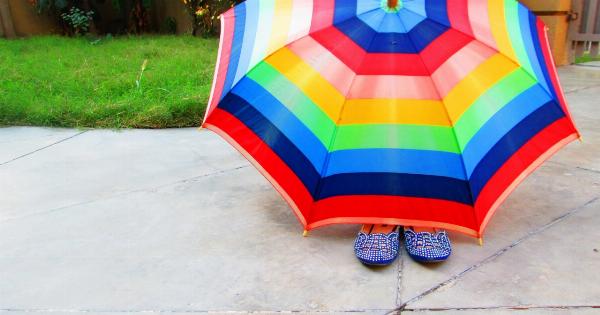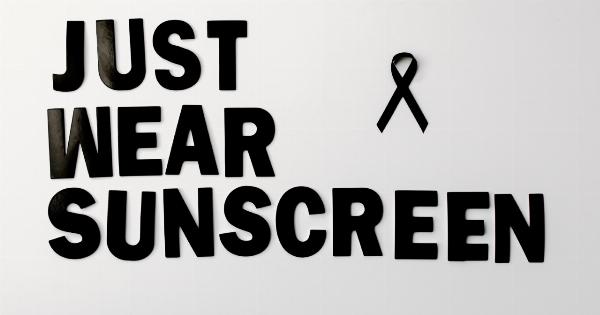Photoceratitis, also known as ultraviolet (UV) keratitis or snow blindness, is a painful condition that occurs when your cornea, the transparent front part of your eye, gets damaged by overexposure to UV radiation.
This condition is similar to sunburn on your skin, but it affects your eyes instead. Understanding how to identify the symptoms of corneal burn can help you seek timely treatment and prevent further damage to your eyesight.
1. Causes of Photoceratitis
Photoceratitis typically occurs when the cornea is exposed to excessive amounts of UV radiation. There are various sources of UV radiation that can lead to corneal burns:.
- Sunlight: The primary source of UV radiation is the sun. Spending long hours in direct sunlight without proper eye protection can increase your risk of developing photoceratitis.
- Tanning beds: Tanning beds emit a significant amount of UV radiation, which can also cause corneal burns if proper eye protection is not used.
- Reflection: UV radiation can bounce off reflective surfaces, such as snow, sand, water, and even concrete. This reflected UV radiation can intensify exposure and contribute to the development of photoceratitis.
- Welding arcs: Certain occupations, such as welding, expose workers to intense UV radiation. Without adequate eye protection, welders are at risk of developing corneal burns and other related eye injuries.
2. Symptoms of Corneal Burns
Identifying the symptoms of corneal burns is crucial in seeking prompt medical attention. While the severity of symptoms may vary depending on the degree of exposure, some common signs of photoceratitis include:.
- Eye pain: Corneal burns often cause severe eye pain, ranging from a dull ache to a sharp, throbbing sensation.
- Redness and swelling: The affected eye may appear red and swollen due to inflammation caused by the corneal burn.
- Tearing and excessive blinking: Increased tearing and blinking are natural responses to the eye’s attempt to wash away and protect itself from further damage.
- Blurred vision: Corneal burns can temporarily affect your vision, causing it to become blurry or hazy.
- Sensitivity to light: Photophobia, or sensitivity to light, is a common symptom of corneal burns. Bright lights may cause discomfort and worsen eye pain.
- Gritty or foreign body sensation: Some people may experience a feeling of having something stuck in their eye or a gritty sensation, which can be quite bothersome.
3. Immediate and Long-term Effects
If left untreated, corneal burns can lead to complications and long-term effects on your eye health. Immediate effects may include the formation of small blisters on the cornea, known as epithelial bullae.
These blisters can cause further discomfort and may interfere with your vision.
In the long term, repeated episodes of corneal burns can increase the risk of developing cataracts, macular degeneration, and other eye conditions.
It is essential to protect your eyes from UV radiation and seek medical attention if you suspect a corneal burn.
4. Treating Corneal Burns
If you experience symptoms of corneal burns, it is crucial to seek immediate medical care. While waiting for professional help, there are a few steps you can take to alleviate the discomfort:.
- Remove contact lenses: If you wear contact lenses, remove them immediately to prevent further irritation to your eyes.
- Rinse with cool water: Gently rinse your eyes with cool, clean water to help flush out any foreign particles and soothe the burn. Do not use cold water or ice as it can worsen the symptoms.
- Apply a cold compress: You can place a cold compress or ice pack wrapped in a cloth over your closed eyes to help reduce pain and swelling.
- Use over-the-counter pain relievers: Nonsteroidal anti-inflammatory drugs (NSAIDs), such as ibuprofen, can help alleviate pain and reduce inflammation. However, it is essential to consult a healthcare professional before taking any medication.
- Avoid further exposure to UV radiation: Protect your eyes from any sources of UV radiation, such as sunlight or bright indoor lights.
It is important to remember that these home remedies are temporary measures and should not substitute proper medical evaluation and treatment by an eye care professional.
5. Prevention and Protection
Preventing corneal burns is crucial for maintaining healthy eyes and preserving your vision. Here are some preventive measures you can take:.
- Wear UV-blocking sunglasses: Invest in quality sunglasses that provide 100% UV protection. Look for sunglasses labeled with a UV400 or 100% UV protection rating.
- Use broad-brimmed hats: Along with sunglasses, wearing a wide-brimmed hat can help shield your eyes from direct sunlight.
- Apply sunscreen: Applying sunscreen with a high SPF to your face and eyelids can provide additional protection against UV radiation.
- Use safety goggles: If you work in environments with potential UV exposure, such as welding or construction sites, always wear appropriate safety goggles or face shields.
- Take breaks: If you spend a lot of time outdoors, make sure to take regular breaks in shaded areas to give your eyes a rest from the sun.
- Be cautious in high-altitude locations: UV radiation increases at higher altitudes, such as in mountains or skiing areas. Take extra precautions to protect your eyes in these environments.
Conclusion
Photoceratitis, or corneal burns, can cause significant discomfort and potentially lead to long-term eye damage if not properly treated and prevented.
By understanding the causes and symptoms of corneal burns, you can take proactive steps to protect your eyes from excessive UV radiation. Seek immediate medical attention if you experience any symptoms of corneal burns, and always prioritize preventive measures such as wearing UV-blocking sunglasses, using sunscreen, and taking breaks from direct sunlight.
Prioritizing your eye health will help ensure clear vision and overall well-being.

























